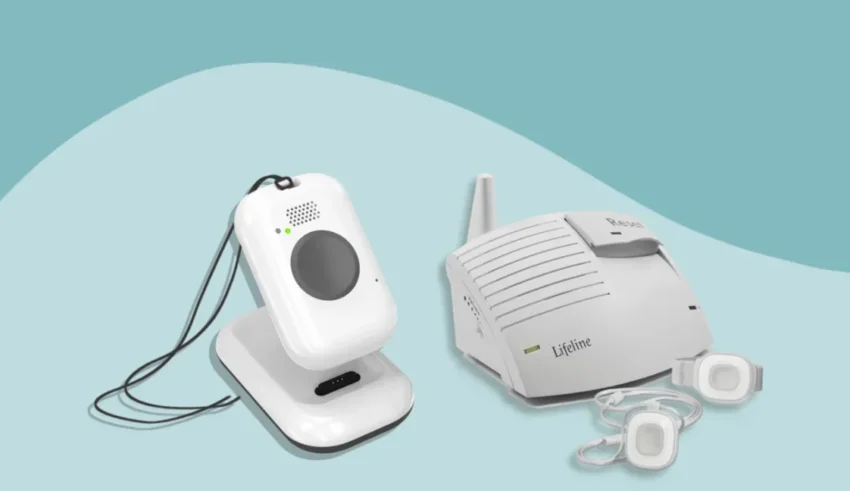
Canada’s size creates unique challenges for medical alert systems that most Canadians don’t think about until they’re shopping for one. A system that works perfectly in downtown Toronto might have serious limitations in rural Saskatchewan or northern British Columbia. The country spans multiple time zones, includes vast stretches of wilderness, and has population densities that range from packed urban centers to communities hundreds of kilometers from the nearest hospital.
Understanding how medical alert coverage actually works across different parts of Canada matters because not all systems function the same way everywhere. What the marketing materials promise and what actually happens when someone presses that button in a small town in Newfoundland or a rural area of Manitoba can be two very different things.
Table of Contents
How Cellular Coverage Affects Everything
Most modern medical alert systems rely on cellular networks to function, especially the mobile ones that work outside the home. But cellular coverage in Canada is far from uniform. The major carriers (Rogers, Bell, Telus) have decent coverage in urban and suburban areas, but once someone gets into rural or remote regions, the reliability drops off significantly.
Northern Ontario, much of the Prairies outside major cities, and vast portions of the territories have spotty or nonexistent cellular service. A medical alert system that depends on cellular connectivity simply won’t work in these areas, no matter which company provides it. This isn’t a flaw in any particular system, it’s a reality of Canadian infrastructure.
For seniors living in these areas, traditional landline-based systems often remain the more reliable option. Yes, landlines feel outdated, and fewer homes have them anymore, but they work independently of cellular towers. The trade-off is that landline systems only function inside the home, while cellular systems can work anywhere there’s coverage.
Some systems use multiple cellular networks to improve coverage, automatically switching between carriers to find the strongest signal. This helps in areas where one carrier has better coverage than others, which is common in rural Canada. Options such as Life Assure medical alert systems Canada providers typically need to be upfront about which networks they use and how that affects coverage in specific regions.
The Geography of Emergency Response
Where someone lives in Canada dramatically affects how quickly help arrives after a medical alert is triggered. In Vancouver, Toronto, or Montreal, ambulances usually arrive within 10 to 15 minutes in urban areas. But emergency response times stretch considerably outside major cities.
Rural communities often rely on volunteer fire departments and ambulance services that might need 30 minutes or more to respond, depending on where the volunteers are when the call comes in. In remote areas of the territories or northern provinces, air ambulance might be the only option, and weather can delay or prevent response entirely.
This doesn’t mean medical alert systems don’t work in these areas, but it does mean that the “help arrives in minutes” promise needs context. The system can notify emergency services immediately, but how long it takes for someone to physically arrive depends entirely on local infrastructure and geography.
Some families in rural areas set up their medical alert systems to call neighbors or family members first, people who are closer and can arrive faster than an ambulance from the nearest town. This isn’t ideal for serious medical emergencies, but for falls or situations where immediate life-saving intervention isn’t needed, having someone nearby arrive quickly can make a real difference.
Provincial Variations in Healthcare Integration
Each province manages its healthcare system differently, and this affects how medical alert systems integrate with emergency services. In some provinces, medical alert monitoring centers can access detailed medical information about the person calling for help. In others, they’re limited to whatever information the family provided during setup.
Ontario’s system allows for relatively smooth coordination between monitoring centers and emergency services. British Columbia has good integration in urban areas but less consistency in rural regions. The Atlantic provinces each handle things slightly differently, and families sometimes discover these differences only after an emergency occurs.
Quebec presents its own unique consideration: language. Medical alert monitoring centers serving Quebec need bilingual operators, and families should confirm that French-speaking seniors can communicate in their preferred language during an emergency. Most major providers offer this, but it’s worth verifying rather than assuming.
The Reality in Remote and Northern Communities
Yukon, Northwest Territories, and Nunavut present the most challenging environments for medical alert systems. Cellular coverage is limited to specific communities, and distances between those communities are vast. Emergency medical services might be hours away by road, if roads exist at all.
Many remote communities rely on nursing stations rather than full hospitals, and serious medical emergencies often require evacuation to larger centers. Weather plays a huge role, with winter storms potentially preventing air ambulances from flying for days at a time.
For seniors in these areas, medical alert systems need to be part of a broader safety network that includes close coordination with local health services, regular check-ins from community members, and realistic expectations about response capabilities. The technology can work, but it functions differently than it does in southern urban centers.
What About Winter?
Canadian winters create specific challenges for medical alert systems that don’t come up in marketing materials. Extreme cold affects battery life in wearable devices. Ice storms can take out power and landlines simultaneously. Heavy snow can delay emergency response even in cities.
Mobile medical alert systems that work outdoors need to function in temperatures that regularly drop to -20C or colder across much of the country. Not all devices are designed for this, and batteries drain faster in cold weather. Seniors who spend time outside in winter, even just checking the mail or taking out garbage, need systems rated for cold weather operation.
Power outages are another consideration. Systems that rely on home base stations need battery backup that lasts long enough to cover typical outage durations in that area. In some parts of Canada, winter storms can knock out power for days, and medical alert systems need to remain functional throughout.
The Coverage Conversation That Needs to Happen
When Canadian families shop for medical alert systems, the first question should be about coverage in their specific area. Not just whether the system “works in Canada” generally, but whether it works reliably at their exact address. This means asking about which cellular networks the system uses, whether there are dead zones in common travel routes, and what backup options exist if the primary connection fails.
Providers should be able to give specific answers about coverage, not vague assurances. They should know the limitations of their system in different regions and be honest about where it works well and where it doesn’t. A good provider will tell someone in rural Newfoundland that a landline system might serve them better than a cellular one, even though it means making a less expensive sale.
Making Informed Decisions
The reality is that no single medical alert system works perfectly everywhere in Canada. The best choice depends on where someone lives, how they spend their time, and what local emergency response looks like. Urban seniors have different needs and options than rural ones. Seniors who travel need different capabilities than those who stay close to home.
Understanding these geographic realities helps families choose systems that actually work for their situation rather than discovering limitations during an emergency. It means asking harder questions of providers, verifying coverage independently, and sometimes accepting that the ideal system they read about isn’t available or reliable in their area. That honest assessment leads to better safety outcomes than assuming all systems work equally well from coast to coast.















